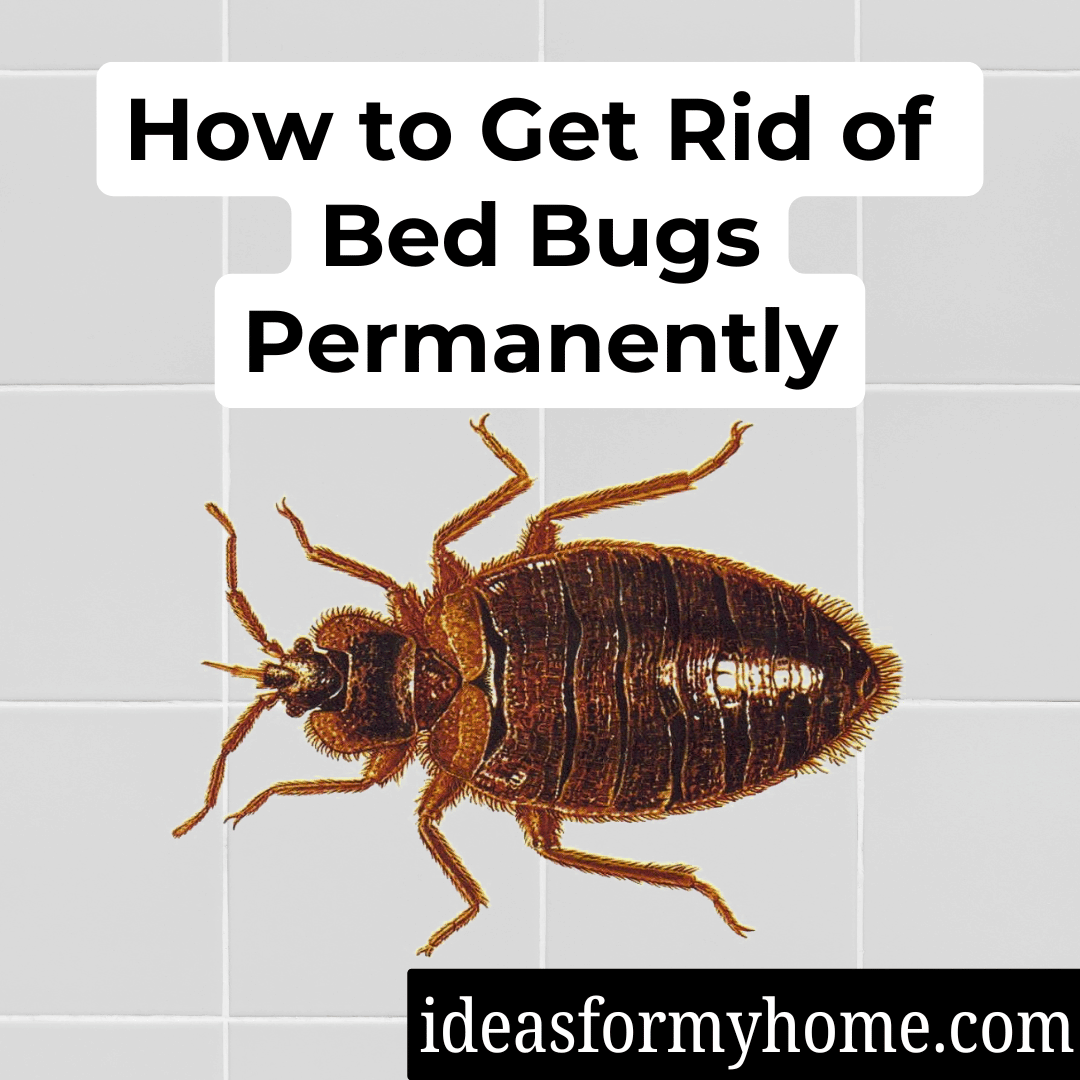This post may contain affiliate links. When you purchase through links on our site, we may earn an affiliate commission. Read our affiliate disclosure
Bed bugs can be very dangerous for us. These tiny pets feed on human blood while we sleep. Scary right? It’s hard to spot and tough to kill. But don’t worry. There are different ways to remove them permanently. How to get rid of bed bugs permanently?
Follow this simple step-by-step guide to eliminate them for good.
How to Get Rid of Bed Bugs Permanently? Step-by-Step Guide
Step 1: First, Identify Bed Bugs
You have to find out where the bed bugs are hiding. It’s easier to get rid of a small infestation. But small infestations are harder to detect.
Where to Look
Bed bugs hide in:
- Mattress seams
- Box springs
- Cracks in bed frames
- Couch cushions
- Fold your fabric
- Baseboards and under carpets
- Behind pictures
- Drawer joints
- Inside electrical outlets and wall gaps
You can use a flashlight and a magnifying glass to check all corners. Take your time. And look closely to find them.
What to Look For
- Live bugs (small, flat, brownish-red, about the size of an apple seed)
- Tiny white eggs or eggshells
- Dark spots (bed bug droppings)
- Red stains on the mattress (from crushed bugs)
- Shed skins (yellowish from young bugs)
If you are not sure, catch the bug in a jar. Take it to a pest control expert or entomologist to better understand.
Step 2: Stop the Bed Bugs from Spreading
Once you find bed bugs, do not let them spread. Act fast.
Vacuum Everything
Vacuum:
- Mattress and bed frame
- Sofas and chairs
- Carpets and rugs
- Baseboards and wall corners
Seal the vacuum bag in plastic. Now, throw it away outside. Then, clean the vacuum.
Wash and Heat Items
Wash clothes and curtains in hot water for at least 30 minutes. Then dry them on the highest heat setting. Do it around 30 minutes. Heat kills bed bugs and eggs.
Seal or Throw Away Items
Put small items (books, shoes, soft toys) in sealed plastic bags for weeks or months. Can’t wash or heat an item? Keep it sealed for at least 2 to 6 months.
Is your furniture heavily infested? It’s better to throw it away. Mark it clearly with the word “BED BUGS” so no one else takes it.
Step 3: Prepare Your Home for Treatment
Good preparation helps make treatment work better.
Clear Clutter
Remove:
- Clothes from the floor
- Books, papers, magazines
- Unused furniture and boxes
Do not move items from one room to another. This can spread bed bugs.
Seal Cracks
- Glue down peeling wallpaper
- Caulk cracks in walls and furniture
- Tape over open electrical outlets
Protect Your Bed
Use bed bug-proof covers for your mattress and box spring. These covers trap bugs inside and stop new ones from getting in.
Step 4: Kill Bed Bugs with Heat or Cold
According to Bed Bug Exterminator Toronto, Bed bugs cannot survive temperatures of 118°F (48°C) or higher for more than 90 minutes. Their eggs start to die at about the same temperature.
Bed bugs die from high heat or intense cold.
Heat Treatment at Home
- Wash and dry all clothes at high heat.
- You can use a steam cleaner on mattresses and floor edges.
- Place items in black plastic bags. Leave them outside on a hot day (above 120°F or 49°C) for at least 90 minutes.
Cold Treatment
- Place small infested items in the freezer. Keep the temperature at 0°F (-18°C) for at least 4 days.
- Use a thermometer to check that the freezer is cold enough.
These methods are safe and work well without chemicals.
Step 5: Use Safe Insecticides (If Needed)
Sometimes, heat and cold are not enough. You may need insecticides.
Use EPA-Registered Products
Look for insecticides approved by the U.S. Environmental Protection Agency (EPA). Also, make sure it is labeled for bed bug use.
Types of Chemicals That Work
- Pyrethrins and pyrethroids – most common, but bugs may resist them
- Pyrroles (e.g., chlorfenapyr) – break down bug cells
- Neonicotinoids affect the bug’s nervous system
- Desiccants – dry out and kill bugs (e.g., silica gel, diatomaceous earth)
Be careful with desiccants like diatomaceous earth.
Do not breathe them in. Use only as the label directs.
Avoid Bug Bombs
Do not use foggers or bug bombs. They do not reach cracks where bugs hide. It can be dangerous to your health.
Step 6: Keep Checking for Bed Bugs
Getting rid of bed bugs takes time. You must check regularly. It helps to make sure they are gone.
- You have to inspect the treated areas every 7 days
- Look for signs like droppings, eggs, or live bugs
- Use interceptor traps under bed legs. So you can catch bugs that try to climb
Keep checking for several months or even up to one year.
Step 7: Call Pest Control when Needed
If home treatment fails, call a professional pest control service.
Experts have access to:
- Stronger insecticides
- Long-lasting chemical treatments
- Whole-room heat treatments (up to 145°F or 62.7°C)
Professional treatment may take 2 to 3 visits. So that you can fully remove bed bugs. Your exterminator will also give you instructions. They help to prepare your home. Follow them closely for the best results.
Step 8: Prevent Bed Bugs from Coming Back
Following the steps is not enough. Once you are free of bed bugs, take steps to keep them away.
Daily Tips
- You have to keep rooms clean and uncluttered
- Vacuum often, especially around beds and sofas
- Wash bedding and clothes regularly
- Use sealed mattress covers
- Seal cracks and wall gaps with caulk
Travel Tips (important)
- Check hotel beds and headboards
- Don’t place luggage on hotel floors
- Use a suitcase rack or stand
- After travel, wash all clothes in hot water and dry on high heat
Final Thoughts
Bed bugs are tough to find and kill. But you can beat them with the right steps. Stay patient. Use heat, vacuuming, and insecticides carefully. Check often and stay alert.
If needed, ask a pest expert for help. So that you can get rid of bed bugs permanently, follow these simple steps to get an effective solution.
Read also: 15 Effective Ways to Get Rid of Silverfish Naturally

My name is Mostarefa. I am an expert in home improvement. With 10 years of experience in the world of home improvement, I have started this blog to empower readers to make confident design choices and cultivate beautiful, functional living spaces. In this blog, I talk about trending home improvement ideas, as well as cleaning and organizing tips.
